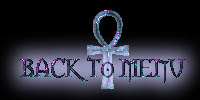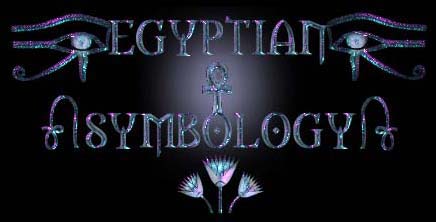
Egyptian symbolism can be found in many forms. The Ancient Egyptians used symbolism in every walk of their lives. Almost every piece of jewelry, ornamentation, architecture, burial chamber, and everyday utensil was adorned with symbols of their faith and history. When viewing Ancient Egyptian Artifacts it is essential you take time and look closely, for they rarely made a mark that didn't represent something. Below you'll find the meanings of many of these symbols.....
Adoration (Dua):
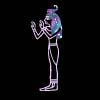
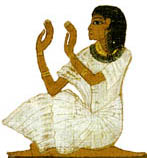
Dua, the symbol for adoration and worship, is represented by a human figure with both arms outstretched and upraised an equal distance from the body. It was always used when showing reverence for a God or Pharaoh (King). Dua represented praise, worship, adoration and respect.
Ankh (Life):

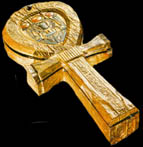
Ankh is probably the most well known Egyptian symbol or hieroglyph. There are many theories as to the actual meaning of the Ankh, but one element most experts agree on is that it represents Life or Life Everlasting. Numerous representations holding the Ankh to the Pharaoh's lips can be found, thus the Ankh offers the Everlasting "breath of life".
Ba (Soul, Spirit, Power):

 The Ba was always portrayed as a human-headed bird, most commonly a Falcon. In burial depictions the Ba was often shown leaving or entering the tomb, or hovering over the deceased. This depiction references the Egyptians' belief that the soul lived on in the Afterlife, carrying each individual's personality traits. In the Egyptian "Book of the Dead", Ba figures are shown towing the barque of the Sun during its nightly journey through the Underworld. Osiris himself was called the "Ba of Re", for some believe certain Ba represented deities such as anonymous gods or powers. Some animals were believed to be the Ba of dieties, such as the Apis Bull (Ba of Ptah) or the Bennu Bird (Ba of Re).
The Ba was always portrayed as a human-headed bird, most commonly a Falcon. In burial depictions the Ba was often shown leaving or entering the tomb, or hovering over the deceased. This depiction references the Egyptians' belief that the soul lived on in the Afterlife, carrying each individual's personality traits. In the Egyptian "Book of the Dead", Ba figures are shown towing the barque of the Sun during its nightly journey through the Underworld. Osiris himself was called the "Ba of Re", for some believe certain Ba represented deities such as anonymous gods or powers. Some animals were believed to be the Ba of dieties, such as the Apis Bull (Ba of Ptah) or the Bennu Bird (Ba of Re).
Cartouche (Shenu):


The Cartouche was the 'place holder' for the name of the Pharoah. The Egyptian name for the Cartouche, "shenu", is derived from the verb, "sheni" meaning to encircle. It is believed the Cartouche began as a Shen Ring and was expanded to its elongated shape after the Pharoahs names were lengthened. The Cartouche had great solar symbolism, for it originally represented everything that was encircled by the Sun, such as the Pharaoh's realm.
Cobra (Iaret):
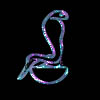
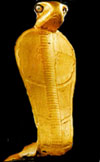
The Cobra, also known as iaret, was the chief symbol for all of Lower Egypt (The vulture, "Nekhebet" was the symbol for Upper Egypt, see below). She was almost always depicted reared up with her hood spread out. Because she was called "The Fiery Eye of Re" (Ra...the Sun), it was a common occurrence to find Iaret on either side of a Sun depiction. The Cobra was heavily associated with the Afterlife, and it was believed two Cobras spitting fire guarded the gates of every hour of the Underworld.
Eye of Horus (Udjat, Wadjet):

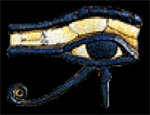
The Eye of Horus is probably the second most recognized symbol of Ancient Egypt. The right eye of Udjat represents the Sun, and the left eye of Udjat represents the Moon. The Egyptian artisans fashioned some stunning pieces in this symbol, for they worked in faience and semi-precious stones such as Lapis Lazuli and Carnelian. This symbol has many, many facets. It represents the eye of the Sun God Horus (son of Osiris and Isis). The reverence shown to parents is one of the virtues symbolized by the Udjat, and this amulet could be used as an offering an eldest son was supposed to provide daily at his father's tomb. It was believed to ward off sickness and be capable of bringing the dead to life. The Udjat was placed in the wrappings of the mummies (over the incision where the embalmers removed the internal organs). Damaging the body in any way was considered bad luck for the deceased, and the Egyptians hoped to protect it by placing the Udjat over the cut.
Feather (Shut):
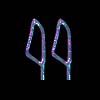
 The Feather, called "Shut", was a symbol of the God Shu. Shu ruled the air and was the father of the Earth "Geb" and the Sky "Nut". The feather was also a symbol of Ma'at, the Goddess of truth and order. The hall of Ma'at was where the deceased would be judged for worthiness and acceptance into the Afterlife. If the heart was free from the impurities of sin, (and therefore lighter than the feather), the deceased would enter the Afterlife. Other gods such as Anubis, who were part of the tribunal overseeing "the weighing of the heart" in the judgement hall, also held a Feather. The feather was usually depicted as a tall ostrich plume.
The Feather, called "Shut", was a symbol of the God Shu. Shu ruled the air and was the father of the Earth "Geb" and the Sky "Nut". The feather was also a symbol of Ma'at, the Goddess of truth and order. The hall of Ma'at was where the deceased would be judged for worthiness and acceptance into the Afterlife. If the heart was free from the impurities of sin, (and therefore lighter than the feather), the deceased would enter the Afterlife. Other gods such as Anubis, who were part of the tribunal overseeing "the weighing of the heart" in the judgement hall, also held a Feather. The feather was usually depicted as a tall ostrich plume.
Ka:
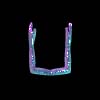

The Ka was the symbol of the life force each human received from the Gods. The Egyptians believed the Ka lived on after death, and because it used the body as a vessel, the body was mummified so that the person would live on in the Afterlife. The Ka was what we would consider a soul, and much more, for it was the conscience or spiritual guide to live by. The god "Khnemu", who was said to be responsible for creating each man out of clay on his potter's wheel, also molded the Ka at the same time. Because the Ka reigned supreme the Pharoahs claimed to possess multiple Kas. There is a difference between the Ka of gods and kings, and the Ka of common people. The Ka of gods and the kings represented a kind of individuality, and the Ka of common people related the individual to his or her family. The Kas of common people were their ancestors that were passed on from generation to generation. The continued existence of the Ka after physical death was to be ensured by offerings made by the deceased's descendants (see Eye of Horus below) and by the magic of the offering-scenes in the tombs (see Ba above).
Lotus (Seshen):
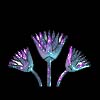
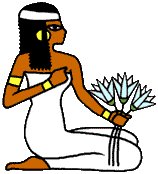
The Lotus was found in three colors in Ancient Egypt, and while the white and pink were used, the blue Lotus was the depiction most commonly found. An interesting fact about the Lotus (past and present) is the habit the plant has of submerging itself at night. The Lotus re-emerges at morning to bask in the Sun, grow and bloom. From this facinating growth habit emerged the creation story. Some believed that it was a Lotus blossom that first emerged from the waters of "Nun" (the Nile), and from this the Sun God came forth.
Menet (Menat, Menit):
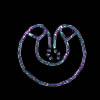
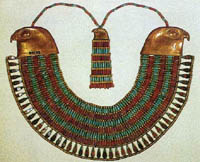
The Menet was a heavy collared "necklace" worn by the elite. The most famous Menet is probably the one found in the shrine of Tutankhamon, and it shows his wife, Ankhesenamon, offering the Pharaoh a Menet personifying the God Hathor. The queen was often a high priestess of Hathor. (Hathor was commonly called "the Great Menet") The Menet you see here belonged to Neferoptah. Note the gold overlayed depictions of Horus on it.
Nefer:

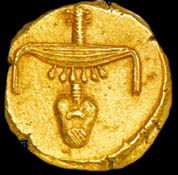
The Nefer represented several things: beauty, goodness, happiness, good fortune, and youth. Several Queens had their names preceded by "Nefer", and the most famous are Nefertiti and Nefertari. Symbolically, the Nefer represented the heart and trachea, and the White Crown of Upper Egypt was sometimes called "the Nefer" or "the White Nefer."
Papyrus Clump (Mehyt):
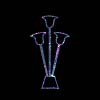
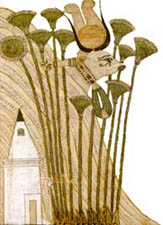
The Mehyt, or Papyrus flourished along the banks of the Nile, and it was a symbol of life itself and the primeval aquatic mix from which all life there evolved. Pillars of Papyrus were believed to hold up the sky, so numerous examples of these can be found as columns in their temples. The Mehyt also served as a symbol of Lower Egypt, and it was often shown along with the symbol of Upper Egypt, the Lotus, to depict a united Egypt.
Scarab (Kheper):
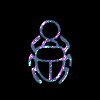
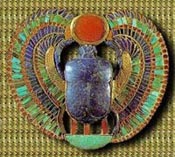 The Scarab was called Khepera by the Ancient Egyptians, and this meant "he was came forth". This title came about because of the manner in which the young Scarab Beetles emerged from their hatching place. To the Egyptians, it seemed like the Scarabs emerged spontaneously, so the beetle was associated with two Gods: The creator god "Atum", and the scarab-beetle God "Khepera". Scarabs, like the feather, were very important in the "the weighing of the heart" in the judgement hall of the deceased. Because of this it was common to place a Scarab representation over the heart of the mummified deceased. The Scarab was associated with the male connotation.
The Scarab was called Khepera by the Ancient Egyptians, and this meant "he was came forth". This title came about because of the manner in which the young Scarab Beetles emerged from their hatching place. To the Egyptians, it seemed like the Scarabs emerged spontaneously, so the beetle was associated with two Gods: The creator god "Atum", and the scarab-beetle God "Khepera". Scarabs, like the feather, were very important in the "the weighing of the heart" in the judgement hall of the deceased. Because of this it was common to place a Scarab representation over the heart of the mummified deceased. The Scarab was associated with the male connotation.
Shen Ring (Shenu):
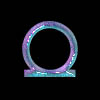

The Shen Ring's name came from the word "Shenu", meaning to encircle. In Egypt, as in many cultures, the circle represented eternity. In addition, the Shenu represented protection for the Pharoahs titles or names. (see the Cartouche above) Common associations with the Shenu were avian Gods such as Horus the Falcon God, and vulture Gods, and as you can see from the picture here the Shenu was held in their talons.
Star (Seba):
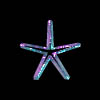
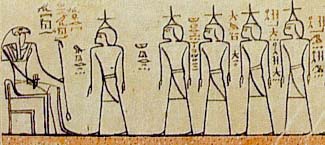
The Stars, or Seba were very important to the Egyptians. There were certain groupings of stars they could always see, and they named these the "imperishable ones". (The imperishable stars were those near the North Star that never seemed to rise or set, and therefore were constant, or visible). In all, they named thirty-eight constellations, and they used them to divide the night sky. Because the Ancient Egyptians were astrologers the stars influenced their calendars, worship, and they called the stars "Followers of Osiris". They believed the stars existed in the Duat (Afterlife) as well, so Egyptian temples were complex reproductions of the cosmos. Some believed the Ba (Soul) ascended to the heavens to become a star. Images of the star constellations and stellar deities graced temple ceilings so that the Ba would feel at home.
Swallow (Soul, Love):


The Swallow represented several things. One was transportation of the soul as found in the Egyptian "Book of the Dead". In Chapter 86 it instructs the deceased on how to transform into a Swallow. In Spell 1216 of the "Pyramid Texts", the Pharaoh describes how he has "Gone to the great island in the midst of the Field of Offerings on which the swallow gods alight; the swallows are the imperishable stars." (see Stars: "imperishable ones" above) The Swallow is also found on the barque of the Sun as it enters the Underworld, and in this context its thought the Swallow is announcing the approach of the Sun because its seated on the bow. References in Egyptian love poetry mention the Swallow declaring the dawn of new love.
Vulture (Neret, Nekhbet):

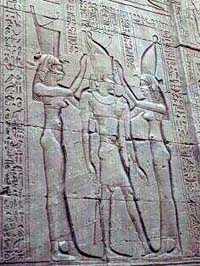
The Vulture also has many representations in Ancient Egyptian history. In Upper Egypt it was associated with the Goddess Nekhbet (see our dieties page). Nekhebet was often shown with her wings spread above the Pharaoh in a protective gesture, for she has one wing extending to the front, the other to the ground, flying above those she is protecting. Nekhebet was called the right eye of Re. The vulture was also a symbol of the Goddesses Mut, Isis and Hathor. It served as a symbol of the feminine (in opposition to the Scarab who signified the male symbol).
